Coronavirus SARS-CoV-2: A look back at three months of mobilisation against an emerging disease (COVID-19)
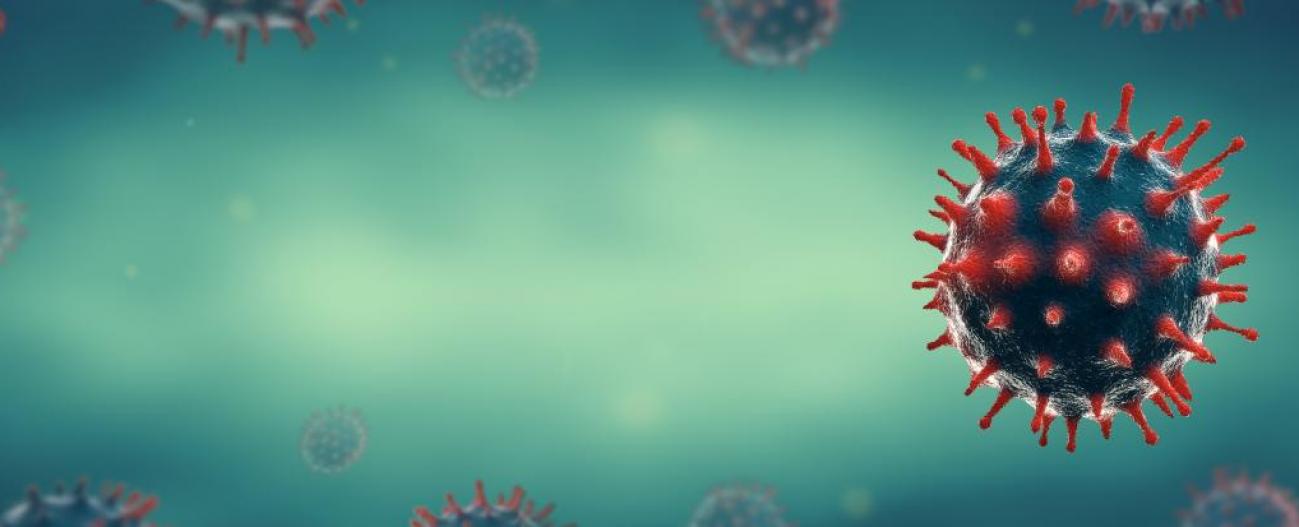
On December 31, 2019, the WHO China Country Office was informed of cases of pneumonia of unknown etiology (unknown cause) detected in Wuhan City, Hubei Province of China. It was the official beginning of an epidemic that would rapidly become worldwide. In January, a task force was put in place at the Institut Pasteur and research projects were quickly launched. Here is a look back at three intense months.
To begin, it should be mentioned that according to certain sources that expressed their opinion at the end of March 2020, the date of the first cases of pneumonia of unknown cause could be called into question. Nevertheless, what follows is the established sequence of events as of March 31, 2020. Chinese doctors didn’t realize they were facing a new disease until late December.
From December 31, 2019 through January 3, 2020, a total of 44 case-patients with pneumonia of unknown etiology were reported to WHO by the national authorities in China. During this reported period, the causal agent was not identified. (source WHO)
COVID-19, a disease causing sometimes little or no clinical manifestations

At the beginning of January, 2020, this emerging disease in China was completely unknown. Later named COVID-19 (for Coronavirus Disease 2019), the discovery occurred gradually, over the course of February and March 2020, that its clinical signs are difficult to observe in patients. Here are some examples:
- The duration of incubation is an average of 5 days, with extremes of 2 to 12 days.
- The onset of symptoms appears gradually over several days, unlike the flu which starts suddenly.
- The first symptoms are not very specific: headache, muscle pain, fatigue/tiredness. Fever and respiratory signs occur secondarily, if they occur, often two or three days after the first symptoms.
- Specific observational studies (such as the one carried out on passengers on the Diamond Princess cruise ship – see February 13, 2020) as well as modeling work have shown that the infection can be asymptomatic or paucisymptomatic (causing little or no clinical manifestations)…
Learn more with the Institut Pasteur disease fact sheet about COVID-19
On January 7, 2020 the Chinese authorities identified a new type of coronavirus, which was isolated.
On January 11 and 12, 2020 WHO received further detailed information from Chinese authorities that the outbreak is associated with exposures in one seafood market in Wuhan City.
On January 12, 2020, China shared the genetic sequence of the novel coronavirus for other countries to use in developing specific diagnostic kits.
On January 13, 2020, Thailand authorities reported the first imported case of lab-confirmed novel coronavirus (then called 2019-nCoV) from Wuhan, Hubei Province, China.
On January 15, 2020, Japanese authorities reported an imported case of laboratory-confirmed novel coronavirus (2019-nCoV) from Wuhan, Hubei Province, China.
(source WHO)
Vigilance in France
The Institut Pasteur hosts the National Reference Center (CNR in French) for respiratory infection viruses (including the flu). As part of the missions defined by the decree of March 7, 2017 (setting the designation procedures and the missions of the CNRs), the CNR for respiratory infection viruses “is designated by the ministry in charge of health, and more particularly by the Directorate General for Health and by Public Health France, to provide expertise on the main respiratory viruses responsible for influenza-like illnesses which may constitute differential diagnoses of influenza.” (source: pasteur.fr - page in French)
“There is no doubt of inter-human contagion and therefore we can foresee the potential occurrence of an epidemic.”
Vincent Enouf, deputy head of the National Reference Center for Respiratory Infection Viruses at the Institut Pasteur January 19, 2020.
(source : The research Journal - page in French).
On January 20, 2020, health authorities from Republic of Korea reported the first case of novel coronavirus there. On this date, the World Health Organisation (WHO) listed 282 confirmed cases of 2019-nCoV signaled by four countries including China (278 cases), Thailand (2 cases), Japan (1 case), and the Republic of Korea (1 case). (source WHO)
Since January 20, WHO has been listing daily all the confirmed cases of infection by the novel coronavirus that have been signaled to them (see all the situation reports). The international situation is followed closely by the French health authorities and regular updates occur so as to share the risk analysis with all national stakeholders. An epidemiological update is published regularly on the Santé publique France website (page in French).
According the Santé publique France, there are two different types of cases: possible cases and confirmed cases. The first type concerns people who present clinical signs according to the different possibilities of exposure established by the health authorities (for example, a recent trip to China, direct contact or proximity to a confirmed case, itinerary similar to that of a confirmed case, etc.). The second type, confirmed cases, are possible cases for which the analysis of a sample has confirmed infection by SARS-CoV-2.
On January 21, 2020, at mid-day, China announced three new victims of the 2019 n-CoV, bringing the count to six deaths. (source: WHO)
The current coronavirus epidemic recalls the SARS epidemic in 2003, “These were probably more severe pneumonias than what we see today with this virus. It is still difficult to know today how effective human-to-human transmission will be and therefore how quickly the epidemic will spread,” said Arnaud Fornanet, head of the Epidemiology of Emerging Diseases unit at the Institut Pasteur in an interview on Europe 1, on January 21, 2020. (source The Research Journal - page in French).
On January 23, 2020, the death toll in China was 17. The victims were elderly people and/or people with associated comorbidities. WHO stated: “The initial source of 2019-nCoV still remains unknown. However, it is clear the growing outbreak is no longer due to ongoing exposures at the Huanan seafood market in Wuhan; as in the last one week, less than 15% of new cases reported having visited the Huanan market. There is now more evidence that 2019-nCoV spreads from human-to-human and also across generations of cases”. (source WHO)
A Task Force is set up at the Institut Pasteur
Starting on January 23, 2020, the 11 million inhabitants of the city of Wuhan (China), cradle of COVID-19, were confined.
On January 23, 2020, a Task Force was set up at the Institut Pasteur to respond to this urgent health crisis. The task force mobilizes Institut Pasteur experts on various scientific areas:
- Understanding more about the virus and its pathogenesis;
- Developing new diagnostic tools and searching for antibodies that may have therapeutic applications;
- Vaccine development;
- Epidemiology and modeling to develop outbreak control strategies.
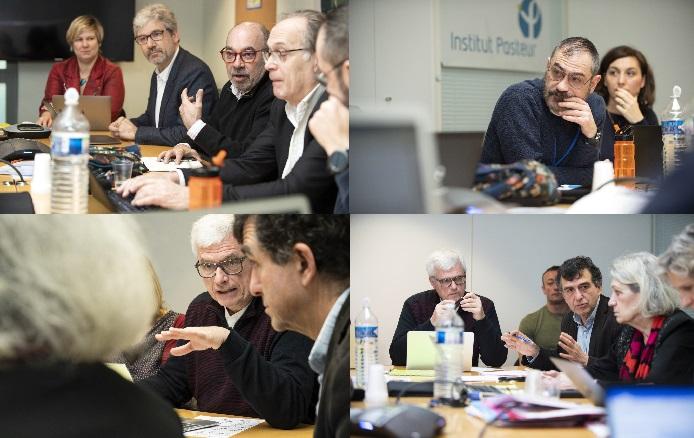
The Institut Pasteur sequences the whole genome of the novel coronavirus
On Friday January 24, 2020, detection of the virus was confirmed in France.
From Friday January 24, 2020, the viral genome was sequenced at the Institut Pasteur.
Mercredi 29 et jeudi 30 janvier 2020. On Thursday January 30, 2020, the Institut Pasteur obtained and shared the whole sequence of the virus, submitted to the Global Initiative on Sharing All Influenza Data (GISAID) platform, which was initially developed to share sequences and monitor the genetic evolution of influenza viruses. A special "coronavirus" tab had been created so that the scientific community can work together and advance at a quicker pace.
Source : press release about “sequencing the whole genome of the coronavirus”
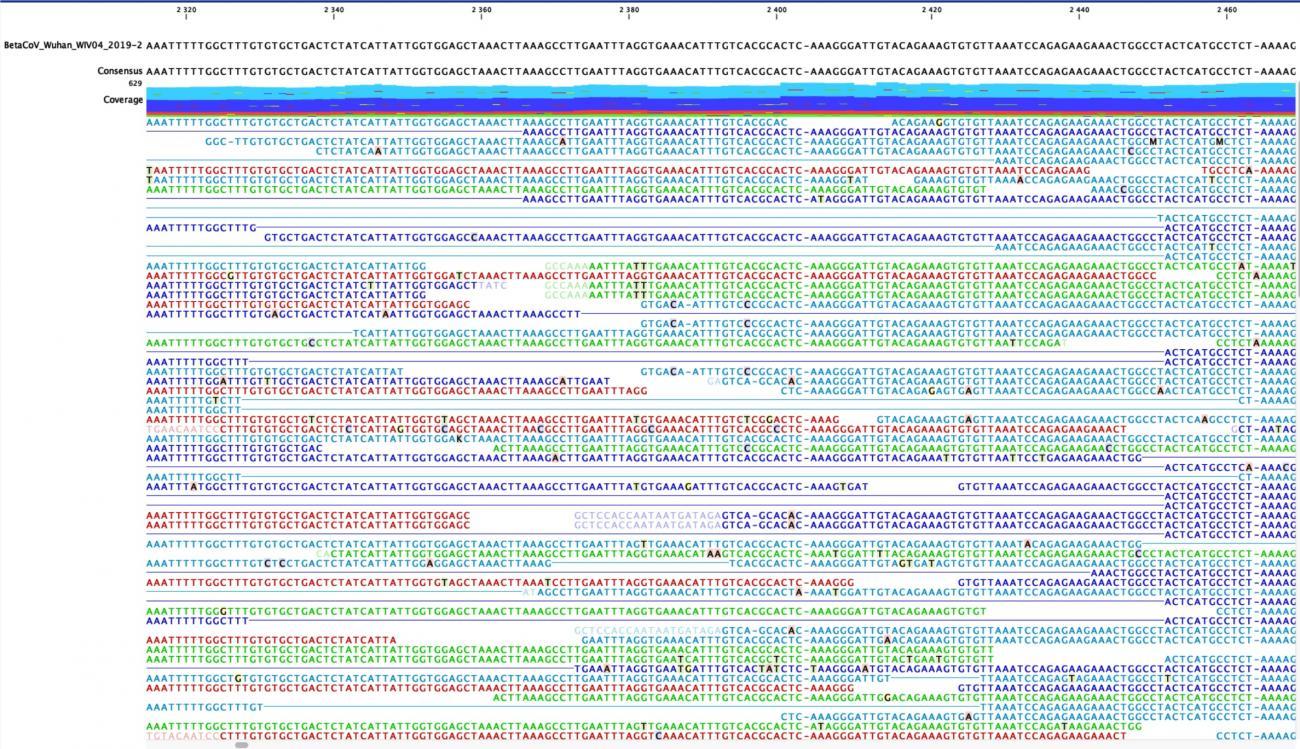
"Sequencing the genome of pathogens is crucial for the development of specific diagnostic tests and the identification of potential treatment options."
Sylvie van der Werf, Director of the National Reference Center (CNR) for Respiratory Viruses at the Institut Pasteur, on January 30, 2020.
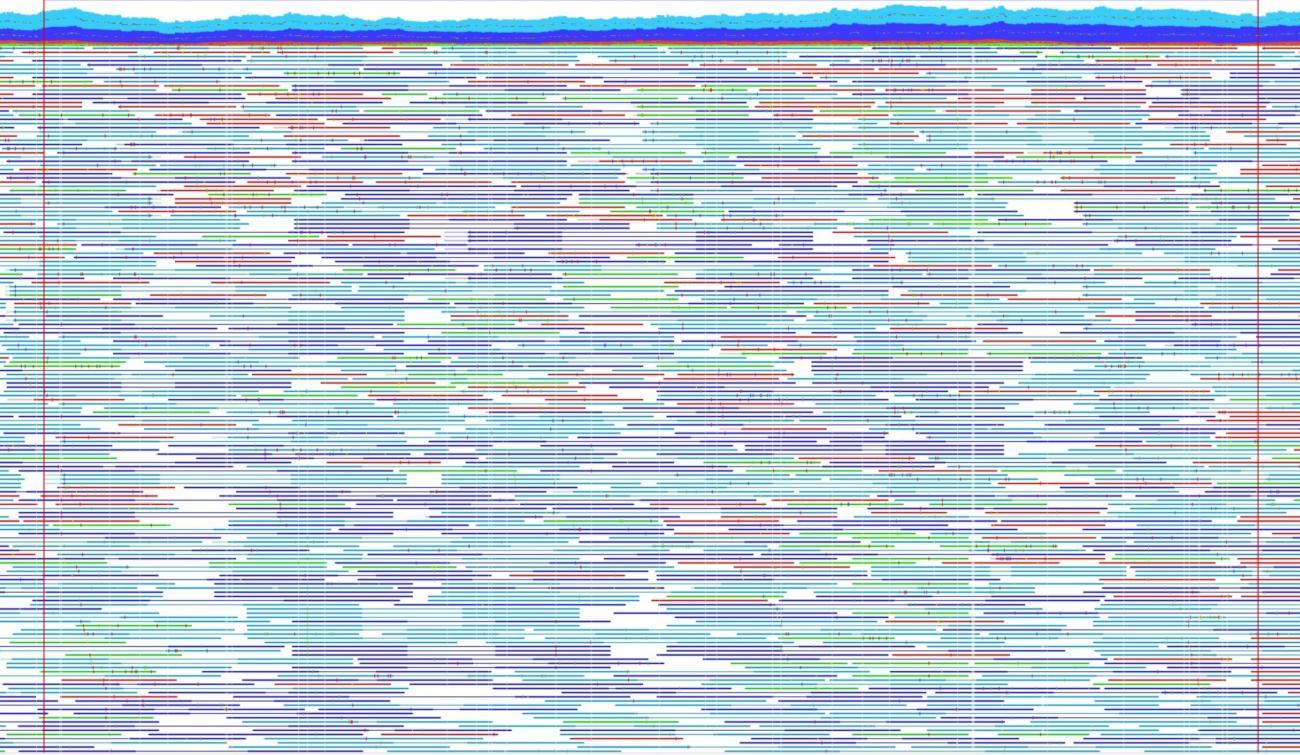
Whole genome sequence of the 2019-nCoV coronavirus, in one of the first French cases, made at the Institut Pasteur (Paris), using a unique Platform (P2M), open to all French National Reference Centers. Copyright: Institut Pasteur / CNR of respiratory infection viruses.
P2M, a state-of-the-art mutualized platform for microbiology also open to external CNRs
P2M is also available to external CNRs for sequencing. In 2019 it worked with four CNRs based outside the Institut Pasteur. The platform sequences bacteria, viruses, parasites and fungi. Thanks to experience gained over the past five years (since 2015), P2M today offers a highly efficient service, as shown by a first-pass success rate (i.e. a high-quality sequence providing comprehensive information on the entire genome) of more than 95% in 2019. Sequence production takes between three days (for emergencies) and ten days at most.
In 2019, P2M sequenced around 25,000 pathogens. Genome sequencing increases the sensitivity threshold for outbreak detection. Early identification of outbreaks by the Institut Pasteur’s scientists (clustered cases in a short space of time caused by the same pathogen) enables epidemiologists to get to work immediately to determine the origins of the outbreak, and the authorities to coordinate the public health response.
Institut Pasteur officially announces the isolation of the novel coronavirus detected in France
As well as sequencing the whole genome of the coronavirus, the Institut Pasteur continued to work on the samples taken from the first confirmed cases.
Monday January 27, 2020, in the morning, the quality of these initial samples enabled rapid cell-culture isolation of the new virus. The Institut Pasteur's scientists now have access to the virus responsible for the infection. The isolation of the virus paves the way for new diagnostic, therapeutic and prophylactic approaches. (source: press release about strain isolation - January 31, 2020).
"Using detection methods, we had observed a high viral load in the samples taken from the patients in hospital in Paris. This enabled us to identify which samples should be cultured first."
Sylvie Behillil, Deputy Director of the CNR at the Institut Pasteur, on January 31, 2020.
(source: press release about strain isolation - January 31, 2020).
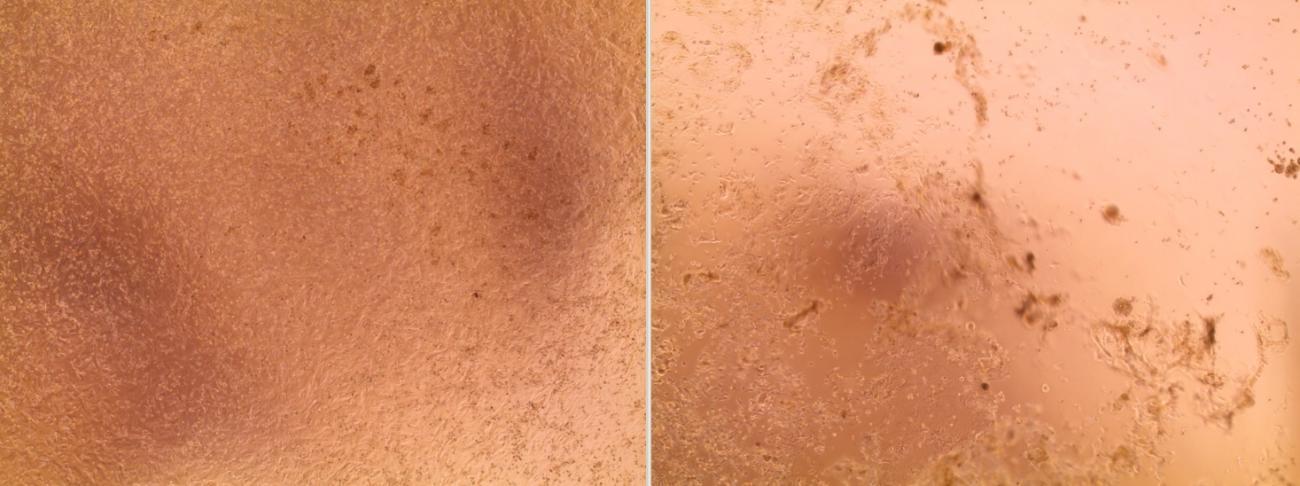
At the beginning of February, the epidemic continued to grow in China, entire villages, and in somes cases regions, were confined.
On February 2, 2020, the first official death outside of China, was reported in the Philippines. (source WHO)
On February 5, 2020, more than 3,700 passengers and personnel aboard the cruise ship Diamond Princess were put into quarantine in the port of Yokohama, Japan, after an 80 year-old passenger who had left the ship in Hong-Kong on February 1, tested positive.
On February 11, 2020, Updates on Diamond Princess, the website of the Diamond Princess, announced that 174 people were sick with COVID-19 caused by SARS-CoV-2.
On February 13, 2020, 46,997 confirmed cases, according to WHO, and 1,368 deceased (254 deceased in the first 24 hours). Outside of China, 447 cases were also confirmed in 24 countries and one death was lamented.
On Friday February 14, 2020, Stewart Cole, President of the Institut Pasteur, played host to His Excellency Mr Lu Shaye, Chinese Ambassador to France, who was visiting the Institut Pasteur to show support both personally and on behalf of his country for the Institut Pasteur’s efforts in response to the novel coronavirus outbreak. (Read the Research Journal article).
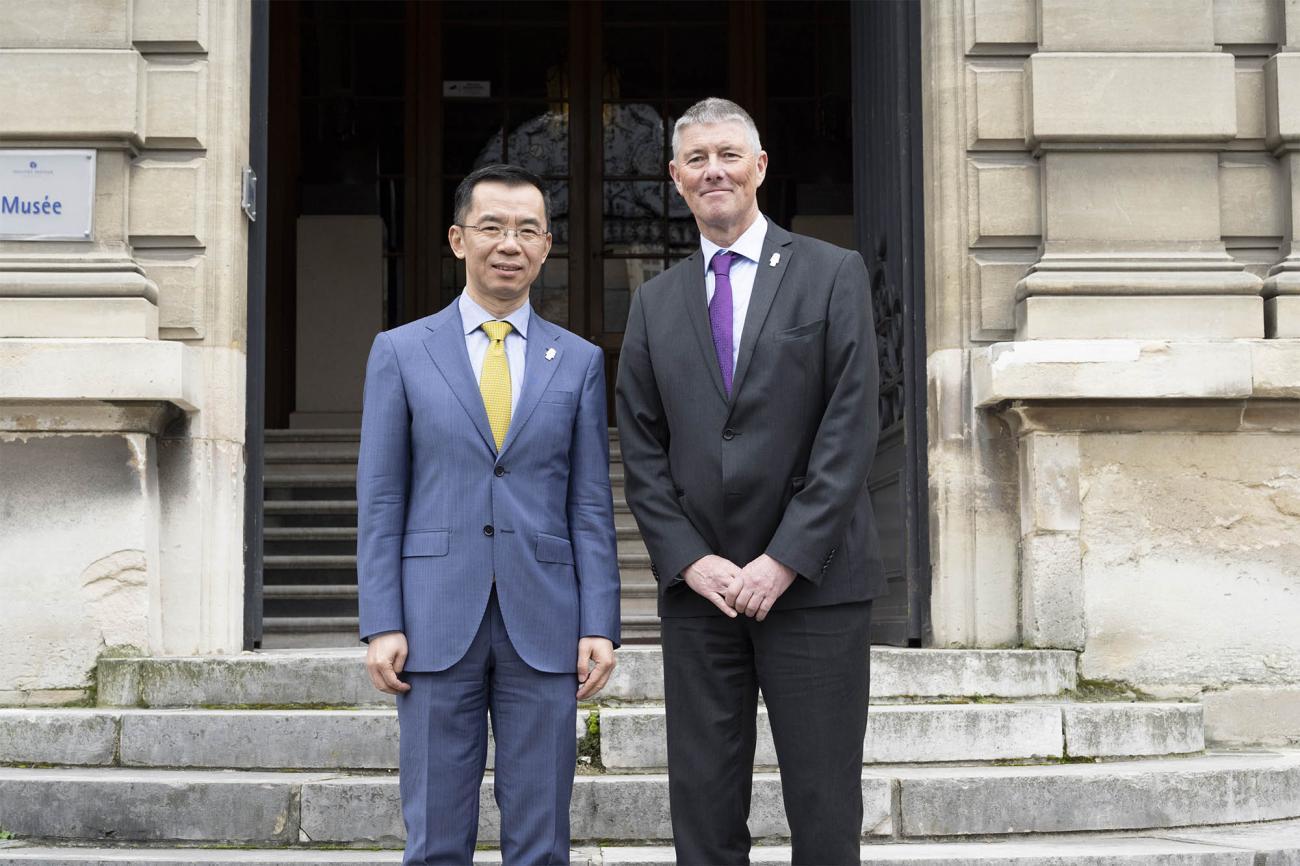
On February 19, 2020, an end of quarantine procedure and landing began for the passengers of the Diamond Princess. Based on information furnished by ambassadors to their citizens, the latter were required to be quarantined for 14 additional days once they arrive in their country of origin (source: Updates on Diamond Princess). In the final count, on board the Diamond Princess, close to 700 passengers were contaminated and 7 of them later died.
What we have learnt as of February 20, 2020
Between the 17th and the 24th of February, 2020 the Christian church l’Église évangéliste de la Porte ouverte held its annual gathering in France. “At the time of the gathering, at the end of February, the epidemic still seemed under control. Only one victim had been identified in France, and thus no social distancing methods were recommended, testifies one devotee, himself contaminated,” reads the France Info TV. website. Since considered to be one of the starting points of propagation of COVID-19 in the Grand Est region, and then in the rest of France, this gathering may have resulted in the contamination of 2,500 devotees.
Around February 20, 2020, the epidemic appeared in Italy and then progressed fairly rapidly. On February 22, the WHO announced a count of 9 confirmed cases (source: WHO). On February 23 there were 76 confirmed cases (source: WHO). On February 28 there were 65 confirmed cases (source: WHO). On March 1st there were 1,128 confirmed cases (source: WHO)
Over the weekend of February 22-23, 2020, and after an epidemic outbreak in China in January-February, the epidemic reached the worldwide level. There was an intensification of hot spots in South Korea, in Japan, and in Singapore, and the appearance of new hot spots in Iran and in Italy. In these countries community dissemination was observed without an identified link to cases imported from China.
Increase in the risk of spread and impact of COVID-19 by the WHO
On February 28, 2020, WHO increased the assessment of the risk of spread and risk of impact of COVID-19 to very high at the global level. (source: WHO)

In the context of the COVID-19 epidemic, continue to apply barrier gestures and social distancing measures.
Gouvernement.fr
On March 4, 2020 the WHO stressed: “Disruptions to the global supply of personal protective equipment (PPE) are leaving healthcare workers ill-equipped to care for patients. WHO is working with governments, industry and the Pandemic Supply Chain Network to boost production and secure allocations for critically affected and at-risk countries.” (source: WHO)
On March 4, 2020, WHO announced: 2,502 confirmed cases in Italy, 212 confirmed cases in France, 196 confirmed cases in Germany, and 151 confirmed cases in Spain. (source: WHO)
On March 7, 2020, the global number of reported cases of COVID-19 had surpassed 100,000 (source WHO). On March 8, over 100 countries had reported laboratory-confirmed cases of COVID-19 (source WHO).
On March 10, 2020, all the countries in the European Union were affected by COVID-19.
On March 10, 2020 WHO announced: 9,172 confirmed cases in Italy, 1,402 confirmed cases in France, 1,139 confirmed cases in Germany, and 1,0124 confirmed cases in Spain (source: WHO)
On March 11, 2020, WHO announced that COVID-19 qualifies as a pandemic, the first triggered by a coronavirus.
On March 12, 2020, 20 COVID-19 research projects were selected by the consortium REACTing, coordinated by Inserm to fight the epidemic, four of which are led by the Institut Pasteur.
France entered the "stage 3" of an active epidemic on its territory
On March 14, 2020, France entered the "stage 3" of an active epidemic on its territory. To slow down dissemination on the territory and reduce the risk of tension on the hospital system for taking care of the most serious cases, social distancing measures were reinforced, with the closure of all places of non-essential groupings (cafes, restaurants, cinemas, discos...). Food stores, pharmacies, banks, tobacconists (newspaper sale points), petrol stations… remained open (with full stalls).
Among the figures observed by experts, the number of hospitalized people, especially those hospitalized in intensive care, becomes an important point for monitoring the epidemic.
On March 14, 2020 WHO counted 17,660 confirmed cases in Italy, 4,231 confirmed cases in Spain, 3,640 confirmed cases in France, and 3,062 confirmed cases in Italy. (source: WHO)
On March 16, 2020, France decided to put in place measures to reduce social contact and restrict movement as much as possible. On March 17 at 12 noon, a containment system was put in place for the entire French territory for a minimum of 15 days. Movement was banned except in certain cases: see Gouvernement.fr (page in French).
On March 16, 2020, WHO counted 24,747 confirmed cases in Italy, 7,753 confirmed cases in Spain, 5,380 confirmed cases in France, and 4,838 confirmed cases in Germany. (source: WHO)
On March 16, 2020, the WHO counted almost as many cases inside China as outside of China: 165,515 cases were confirmed worldwide with 81,077 in China and 86,438 outside of China (in 143 different countries). 3,218 deaths were counted inside China and 3,388 outside of China.
On March 19, 2020, Stewart Cole, President of the Institut Pasteur, welcomed French President Emmanuel Macron and the Science Minister Frédérique Vidal. The visit was an opportunity for them to meet the scientists who are helping advance research in order to fight the pandemic caused by the novel coronavirus.
Scientific analysis about the emergence of the coronavirus and how research can face it
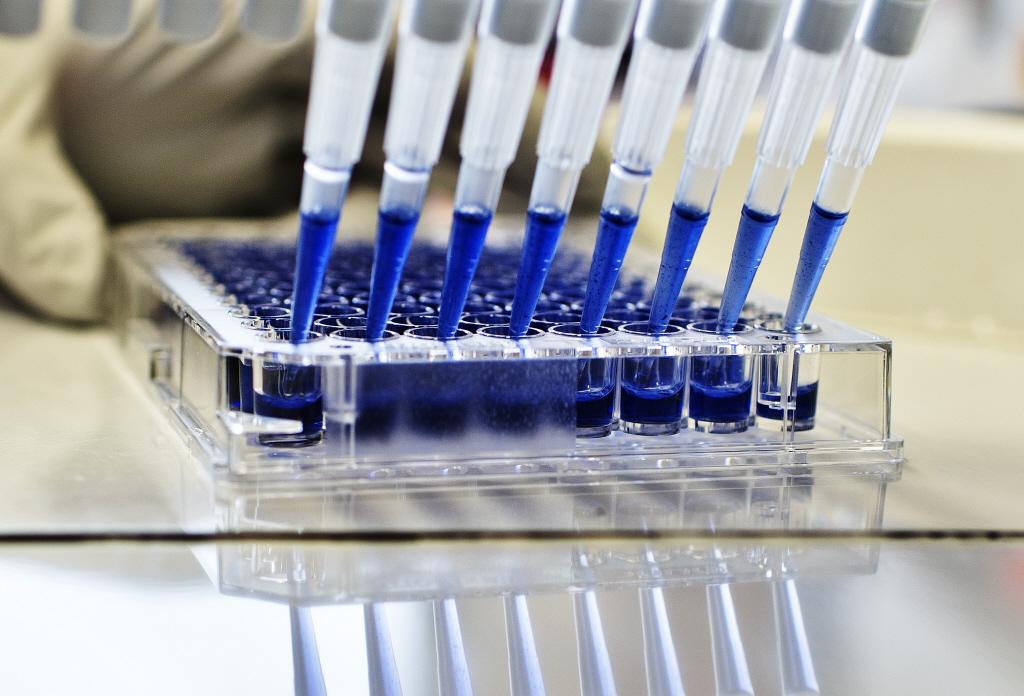
On March 20, 2020, Prof. Sylvie van der Werf, head of the National Reference Center for Respiratory Viruses at the Institut Pasteur, wrote an article about the novel coronavirus SARS-CoV-2 outbreak and how research can face the challenges with the COVID-19 epidemic. This paper was published in the journal Virologie in March 2020 (Virologie, Vol 24, supplément, mars-avril 2020).
On March 23, 2020 the French High Council for Public Health issued an opinion on the therapeutic recommendations for the treatment of COVID-19 (page in French).
On March 23, 2020 WHO counted 59,138 confirmed cases in Italy, 28,572 confirmed cases in Spain, 24,774 confirmed cases in Germany, and 15,821 confirmed cases in France. (source WHO)
Clinical presentation of the first five cases of COVID-19 identified in France
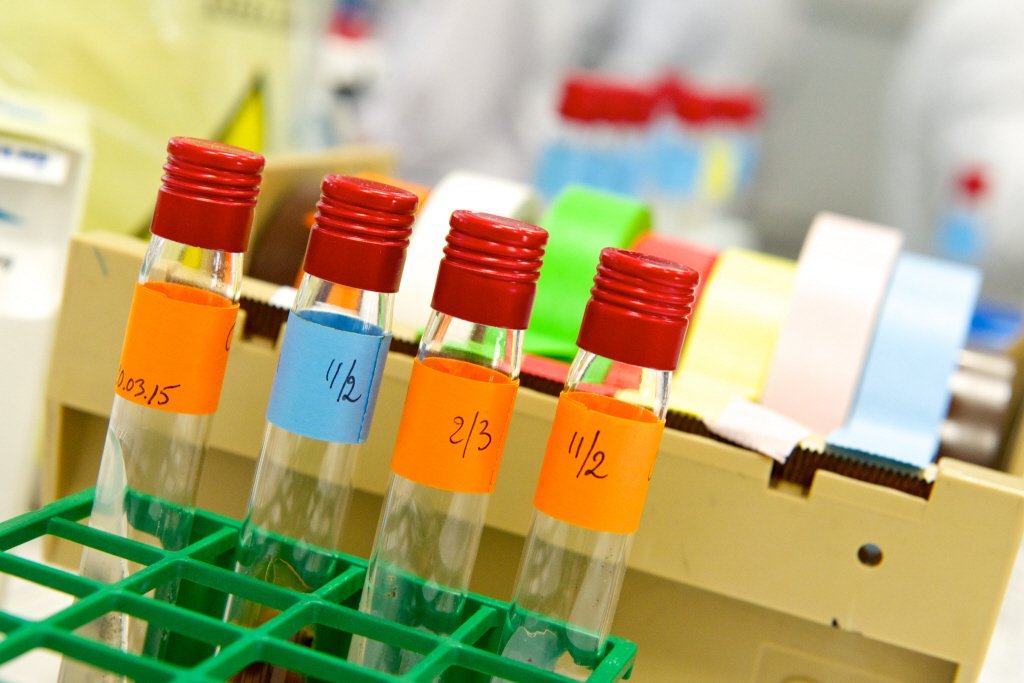
Publication of a study, in the journal The Lancet Infectious Diseases, about the first five cases of COVID-19 identified in France, and in Europe, between January 24 and 29, 2020. This study is the result of collaborative work between the Assistance Publique – Hôpitaux de Paris, the University of Paris, Inserm, the Institut Pasteur and the CHU de Bordeaux (Hospital). The follow-up of those first five COVID-19 patients diagnosed in France, despite the very limited number of patients, made it possible to identify three different types of clinical presentation.
Read the press release - in French
On March 30, 2020, WHO counted 82,447 confirmed cases in China, 97,689 confirmed cases in Italy, 78,797 confirmed cases in Spain, 57,298 confirmed cases in Germany, and 39,642 confirmed cases in France (source WHO). Remember that these figures correspond to confirmed cases of infection by the novel coronavirus (by test) that are reported to the World Health Organisation (WHO).
On March 30, 2020, the French government asked for a full opening of publications and scientific data issued from French research on COVID-19.
Scientific research programs underway at the Institut Pasteur

On March 31, 2020, while the epidemic is growing very quickly in France, as in many other countries on all continents, many scientific research programs are underway at the Institut Pasteur. These programs currently involve nearly 300 people, at this date.
According to Santé publique France, 70,478 cases confirmed in France since the start of the epidemic, 51,557 people hospitalized, of whom 28,891 are still in hospital. 6,978 people currently hospitalized in intensive care, and 8,078 deaths. (source Santé publique France - page in French)



